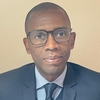Author: Adi Muslic, PMP
This is the third course in the OT Series (https://www.pmi.org/organizational-transformation/orchestration), which provides the leadership and strategic knowledge of transformation initiatives.This advanced course applies focus on assessing market conditions and trends, exploring frameworks for achieving outcomes, and applying a human-centric approach towards your organization.
The Orchestration course provides guidance on how to:
- Describe what it takes to lead a people-centered transformation.
- Identify and describe the various frameworks you will need to achieve transformation outcomes (such as Organizational Network Analysis, Exploit and Explore, and others).
- Assess different market conditions, trends, and disruptors for your organization.
- Describe the 4-phased framework of Waves, Horizons, Domains and Types that will enable you to frame the broader transformation picture.
- Assess capabilities your organization will need to successfully transform.
There are 4 modules:
- Leading a People-Centered Transformation
- Achieving Transformation Outcomes
- Market Awareness and Strategic Responses
- Assessing Capabilities
Throughout all the modules in the course, we are engaged in real-life scenarios to explore how various concepts come to life. For many concepts, the scenarios refer to an organization that is recognized for its positive attitude to change - and which has driven its own transformation.

In the first module, we explore several leadership concepts, including:
- Leadership characteristics
- Exploiting the Core & Exploring the Edge from a cultural standpoint
- The People-Centered Transformation (PCT) Framework
- Each of the 10 PCT elements, including the Insights, Findings, and Shifts for each
Some of the key takeaways are:
Everyone has gaps in their leadership capabilities. We can use the PCT Framework to recognize, unravel and improve.
Organizations that are transforming must be agile. Organizations that encourage a cross-functional, agile mindset over a traditional silo structure are often the most effective at delivering successful transformations. Agile organizations decentralize decision-making to an appropriate level that will achieve an effective balance between autonomy and authority.
Leaders must empathize and understand what motivates their employees to change and deliver results. By doing this, employees can feel empowered to make decisions and contribute to the decentralized culture.

In the Achieving Transformation Outcomes module, we explore some business-oriented frameworks and strategies:
- The concept of organizational longevity
- Exploiting the Core & Exploring the Edge from a business perspective
- Creating a second operating system is important.
- The Business Portfolio Map
- The 9 most important frameworks while transforming
Some frameworks used by transforming organizations are: Program Management, Agile, Objectives and Key results, Portfolio management, Design thinking, etc.
Organizations that cannot keep up with the increased level of change and complexity have no future. High-performing organizations are more adaptable and can correct the course when strategic initiatives are going off the rails.
Organizations need to develop a second operating system that uses an agile network and a very different set of processes to explore new growth opportunities.
In the Market Awareness and Strategic Responses module, we learn how to perceive the market in which our organization operates. We explore:
- The Social, Political, Environmental, Economic, and Competitive (or SPEED/C) factors of a market environment.
- The Drivers, Opportunities, and Threats associated with each of these factors.
- How to plan the strategic response for each of the SPEED/C factors
- The Waves, Horizons, Domains, and Types of Transformation
Strategic leadership takes a curious mind, constant learning and vigilant research to determine industry trends and the environment in which the organization operates.
In the 4th module, the Assessing Transformation Capabilities, we learn that most common challenges in implementing strategy are:
- Skills gap within internal talent
- Insufficient technology
- Competition from smaller organizational
- lack of resources
- lack of efficient processes guiding strategy
In this module, we learn how to assess and bridge capabilities that are needed to transform, such as
- The capabilities (soft and hard) required for the transformation’s vision.
- The capability readiness of your organization so that you can achieve the desired transformation level.
- Prioritizing required capabilities.
- Approaches and choosing the optimal approach (build, buy, ally, or outsource) to close the transformation capability gap
- Assessing what must be done more, better and/or differently from a leadership perspective to close the transformation capability gap

Assessing Capability Areas helps identify an organization’s capability strengths and weaknesses. Closing the capability gap is critical for the organizational transformation to be successful.
Step 1 : Map the capabilities in 4 areas : People, Structures, Technology and Assets
Step 2: Identify the gaps in 4 areas and classify them in 4 capability types : Distinctive, Competitive, Foundational and Bridging.
Step 3: Determine how to fill the gaps by combining the urgency and 4 capability types in the Capability Landscape that show us what to build, acquire, partner, or outsource.
This is the last article about the OT Series. If you like to learn more, ask questions and get direct answers, register for our online event Leading dynamic people-centered transformations on 31 March at 18:30.
If you think that creation of an Organizational Transformation Community of Practice would be beneficial for you and your organization, please get in touch using out contact form and selecting Sponsors and Partners topic.





